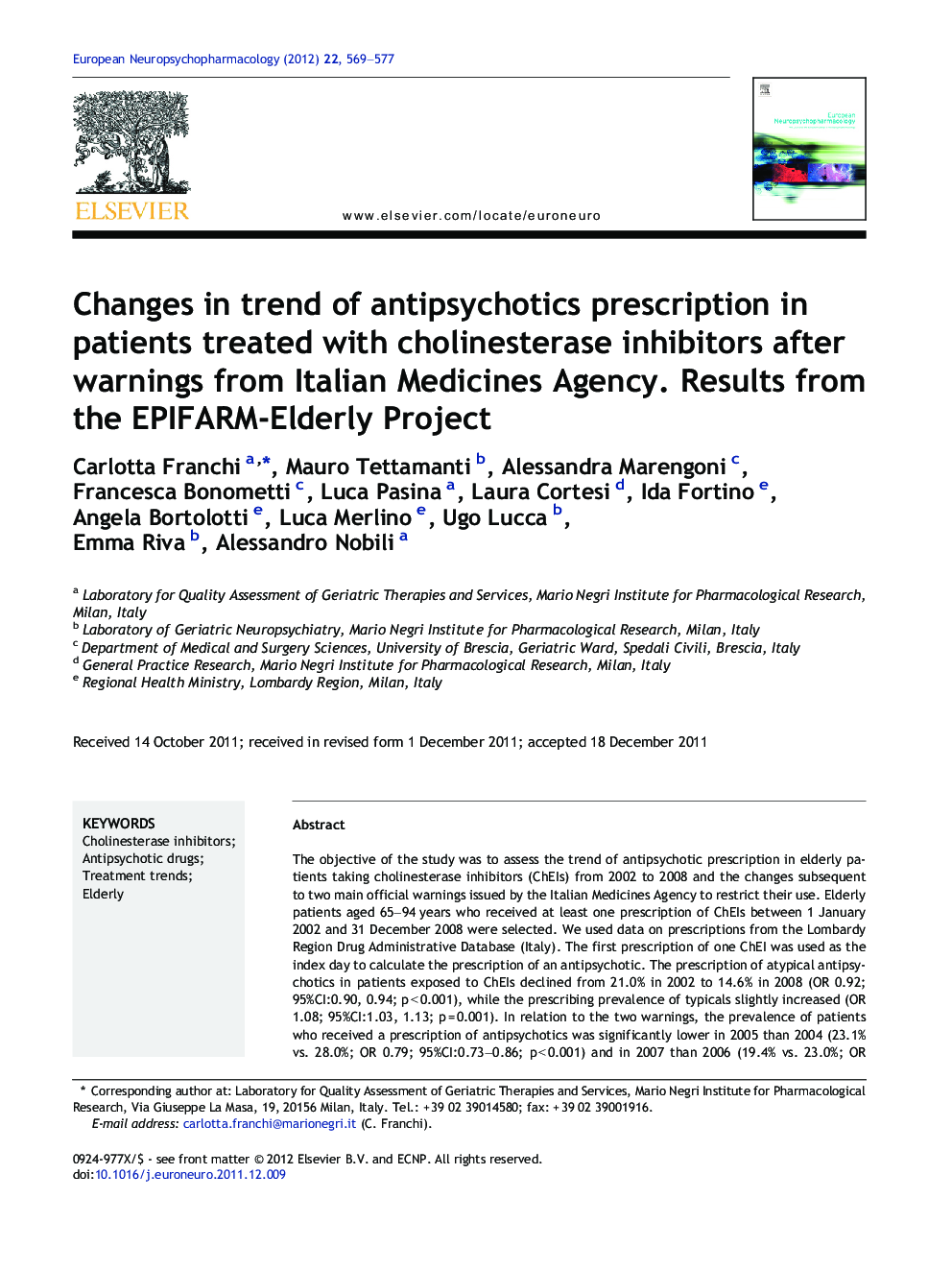| Article ID | Journal | Published Year | Pages | File Type |
|---|---|---|---|---|
| 10299420 | European Neuropsychopharmacology | 2012 | 9 Pages |
Abstract
The objective of the study was to assess the trend of antipsychotic prescription in elderly patients taking cholinesterase inhibitors (ChEIs) from 2002 to 2008 and the changes subsequent to two main official warnings issued by the Italian Medicines Agency to restrict their use. Elderly patients aged 65-94 years who received at least one prescription of ChEIs between 1 January 2002 and 31 December 2008 were selected. We used data on prescriptions from the Lombardy Region Drug Administrative Database (Italy). The first prescription of one ChEI was used as the index day to calculate the prescription of an antipsychotic. The prescription of atypical antipsychotics in patients exposed to ChEIs declined from 21.0% in 2002 to 14.6% in 2008 (OR 0.92; 95%CI:0.90, 0.94; p < 0.001), while the prescribing prevalence of typicals slightly increased (OR 1.08; 95%CI:1.03, 1.13; p = 0.001). In relation to the two warnings, the prevalence of patients who received a prescription of antipsychotics was significantly lower in 2005 than 2004 (23.1% vs. 28.0%; OR 0.79; 95%CI:0.73-0.86; p < 0.001) and in 2007 than 2006 (19.4% vs. 23.0%; OR 0.79; 95%CI:0.73-0.86; p < 0.001). After the first safety warning the prevalence of prescriptions for risperidone and olanzapine dropped significantly, and there was a significant increase for quetiapine. Haloperidol prescriptions increased, especially after the second warning. Despite regulatory warnings issued to discourage the use of antipsychotics, they are still frequently prescribed to patients taking ChEIs. Awaiting further studies to clarify their therapeutic role, physicians should prescribe antipsychotics very cautiously and only after careful risk-benefit assessment.
Related Topics
Life Sciences
Neuroscience
Biological Psychiatry
Authors
Carlotta Franchi, Mauro Tettamanti, Alessandra Marengoni, Francesca Bonometti, Luca Pasina, Laura Cortesi, Ida Fortino, Angela Bortolotti, Luca Merlino, Ugo Lucca, Emma Riva, Alessandro Nobili,
